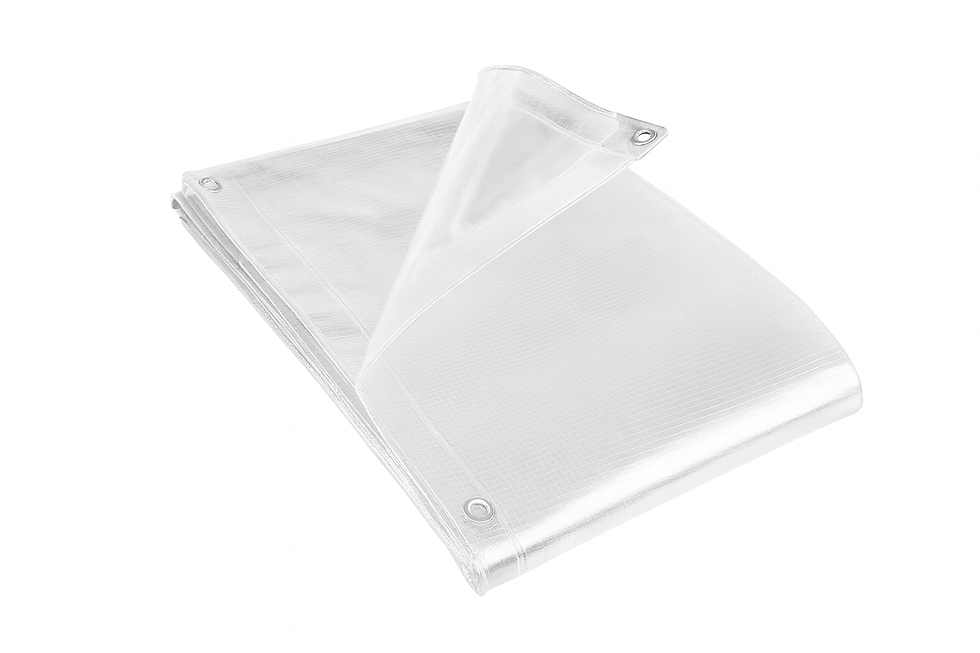Tarpaulins in Agriculture: Tailored Solutions for Crop Protection
- UK Tarps
- Nov 24, 2023
- 3 min read
In the immense and dynamic scene of farming, where the impulses of climate and natural variables assume a critical part, the requirement for dependable security is central. Tarpaulins, usually known as tarps, have arisen as basic devices for protecting harvests and upgrading agricultural practices. In this investigation, we dig into the domain of agricultural tarps, figuring out their particular designs, applications, and the crucial job they play in crop security and the board.
Understanding the Agricultural Landscape
Agricultural tarps are purpose-worked to address the novel difficulties looked by ranchers and cultivators. These difficulties length a range, from safeguarding collected yields to making ideal circumstances for plant development. The adaptability of agricultural tarps lies in their capacity to offer customized answers for assorted needs, adding to expanded yields, upgraded crop quality, and proficient ranch the executives.
Types of Agricultural Tarps
Hay Tarps:
Purpose: Hay tarps are designed to safeguard baled hay from the components. They safeguard hay from downpour, forestalling dampness assimilation that could prompt form development and crumbling.
Design Features: Hay tarps ordinarily include a waterproof and UV-safe design. They are frequently outfitted with built up edges and grommets for secure straps.
Grain Bunker Covers:
Purpose: Grain shelter covers act as defensive safeguards for put away grains. They forestall openness to dampness, bugs, and natural factors that can think twice about nature of put away grains.
Design Features: These tarps are created from tough and waterproof materials. They might incorporate features, for example, ventilation folds for legitimate air circulation.
Silage Tarps:
Purpose: Silage tarps are utilized in the silage-production process, covering newly gathered scrounge to establish an anaerobic climate that advances aging.
Design Features: Silage tarps are many times dark to improve heat assimilation and avoid light, working with the aging system. They are additionally designed to be water/air proof and sturdy.
Frost Protection Tarps:
Purpose: Frost protection tarps are utilized to protect crops from ahead of schedule and late-season ices. They make an obstruction that traps heat, forestalling the development of harming ice on plants.
Design Features: These tarps might be produced using materials that have protecting properties. They are lightweight and simple to convey, giving impermanent assurance when required.
Shade Tarps:
Purpose: Shade tarps are used to direct daylight openness, offering shade to crops that might be delicate to exorbitant daylight or intensity.
Design Features: Shade tarps come in fluctuating levels of concealing, permitting ranchers to pick the fitting degree of daylight decrease for their particular yields. They likewise give assurance against hail and light precipitation.
Advantages of Agricultural Tarps
Crop Protection:
Agricultural Clear Tarpaulin sheets go about as a defensive boundary, safeguarding crops from unfavorable weather patterns like downpour, hail, ice, and serious daylight. This assurance is critical for keeping up with crop quality and boosting yields.
Moisture Management:
Tarps designed for agricultural use, for example, hay tarps and grain dugout covers, successfully oversee dampness. By forestalling water entrance, they decrease the gamble of shape development, decay, and different types of water-related harm to put away harvests.
Temperature Regulation:
Ice security tarps and shade tarps add to temperature guideline in the agricultural setting. They help make ideal microclimates, shielding plants from temperature limits and advancing solid development.
Pest Prevention:
Silage tarps assume a part in bother counteraction during the silage-production process. By establishing a sealed shut climate, these tarps beat the presence of bugs and undesirable microorganisms in the silage down.
Enhanced Crop Quality:
The utilization of agricultural tarps means upgraded crop quality. By relieving the effect of climate related stressors, tarps add to the improvement of better, more hearty harvests.
Flexibility and Versatility:
Agricultural tarps are flexible apparatuses that can be adjusted to different cultivating rehearses. Their design features, for example, supported edges and grommets, make them simple to send and get in various situations.
Considerations When Choosing Agricultural Tarps
Material Selection:
Different agricultural tarps are created from materials with explicit attributes. Consider factors like waterproofing, UV obstruction, and breathability while picking the fitting material for the planned application.
Size and Dimensions:
Select tarps that match the size and aspects of the area or trim you expect to cover. A legitimate fit guarantees successful inclusion and insurance.
Durability:
Agricultural tarps ought to be sufficiently strong to endure the afflictions of open air use. Search for features like built up edges, tear obstruction, and UV insurance to guarantee enduring execution.
Ease of Use:
Tarps designed for agricultural use ought to be not difficult to send, secure, and eliminate. Features, for example, grommets and secure choices add to easy to use applications.
Specific Application Needs:
Think about the particular necessities of your agricultural application. Whether safeguarding hay, grains, or yields from ice, pick a tarp designed to address the special difficulties of that situation.
Conclusion
In the unpredictable embroidery of agribusiness, where the components and ecological elements are considerable powers, agricultural Tarpaulins UK arises as custom fitted arrangements. From protecting the nature of put away harvests to making ideal circumstances for plant development, these particular tarps assume a crucial part in present day cultivating rehearses. By understanding the different kinds and utilizations of agricultural tarps, ranchers can saddle the advantages of these flexible instruments, upgrading the strength and efficiency of their agricultural undertakings.




Comments